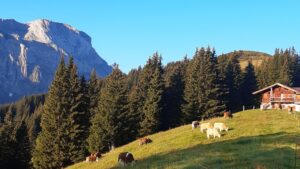Abstract/Description
Mountain regions, vital for freshwater supply, biodiversity, climate regulation, and other ecosystem services, face escalating climate risks. These highly vulnerable socio-ecological systems are increasingly exposed to multiple climate hazards, including rising temperatures, accelerated glacial retreats, permafrost loss, and extreme weather events. Despite recognition in global policy frameworks, mountain risk assessments remain fragmented, limiting the holistic understanding necessary for effective adaptation and resilience-building. Under the United Nations Framework Convention on Climate Change (UNFCCC), country parties periodically assess and communicate their climate risks, vulnerabilities, and adaptation needs through Nationally Determined Contributions (NDCs), National Adaptation Plans (NAPs), and Biennial Transparency Reports (BTRs). These national climate action plans provide valuable information for a bottom-up global synthesis of climate risks and adaptation priorities. Using the IPCC AR6 risk assessment framework, this study systematically reviews and synthesizes climate hazards, exposure, vulnerability and adaptation measures prioritized by mountainous countries in their most recent NDCs, NAPs, and BTRs. To structure the policy analysis, this study applies the MOVE (Methods for the Improvement of Vulnerability Assessment in Europe) framework for vulnerability analysis, and the UNDRR Hazard Information Profiles (HIP) for hazard classification. This study maps and compares climate risk components and adaptation strategies trends across major mountain regions worldwide, including the Hindu Kush Himalayas, Andes, Alps, Carpathians, and others. It identifies key trends in climate hazards, vulnerabilities, exposure and adaptation responses across geographic regions, sectors, and other analytical dimensions. Additionally, it examines adaptation plans across climate change impact sectors and seven thematic targets of the UAE framework for Global Climate Resilience. Through this integrated and bottom-up approach to mountain risk assessment, this study aims to inform future policy development and strengthen resilience-building efforts in these critical regions.


